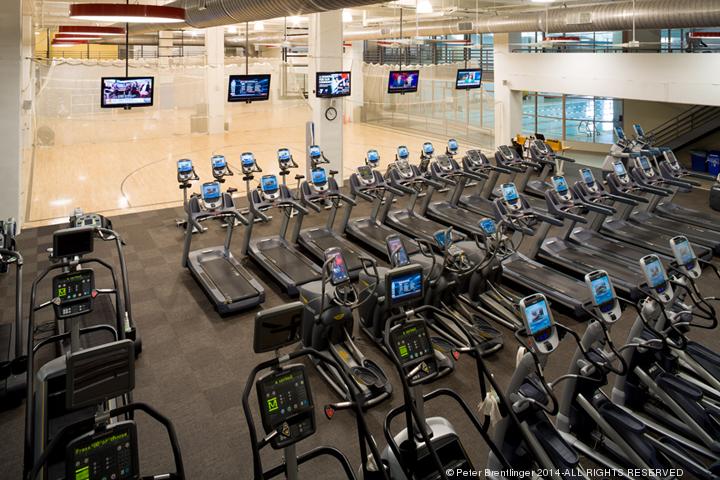 Photo: Childress Klein YMCA CBJ / Peter Brentlinger
In a recent March 2020 post, our client Jon Bontrager, VP of Facility Management for the YMCA of Greater Charlotte, posed the question asking, “how do #postcovid19 facilities function differently? What is the residual consumer sentiment from this?” He went on to explain that he was asking specifically about wellness initiatives, outdoor vs. indoor pool use, lobby space for increased room between individuals in lines and between gym fitness equipment too.
Ragona Architecture & Design team reflected on this and then compiled their collective thoughts for Jon’s review to which he replied, “Really good stuff, RAD team. Hygiene Motivation! Good tagline.” Read the suggested changes below of this ever-changing environment and let us know if you think we missed something.
Photo: Childress Klein YMCA CBJ / Peter Brentlinger
In a recent March 2020 post, our client Jon Bontrager, VP of Facility Management for the YMCA of Greater Charlotte, posed the question asking, “how do #postcovid19 facilities function differently? What is the residual consumer sentiment from this?” He went on to explain that he was asking specifically about wellness initiatives, outdoor vs. indoor pool use, lobby space for increased room between individuals in lines and between gym fitness equipment too.
Ragona Architecture & Design team reflected on this and then compiled their collective thoughts for Jon’s review to which he replied, “Really good stuff, RAD team. Hygiene Motivation! Good tagline.” Read the suggested changes below of this ever-changing environment and let us know if you think we missed something.
1. First of all, how one enters a public facility will need to be addressed. Do our Entry Vestibules become Decontamination/Sanitation Tunnels where atomizing nozzles saturate the environment with micro droplets of a sanitation product?
10. Introduce more automatic doors with sensors or fob systems going into and out of high traffic areas to reduce everyone touching door handles and push bars.
2. Exercise rooms where specialized classes are held will need greater spacing of equipment. For instance cycling studios or yoga classes will most likely want to space cycles and mats 8’-0” on center so that a 6’-0” minimum distance occurs between people. This will mean that class sizes will be smaller and you will have to schedule more sessions to accommodate your typical demand. Another option would be to space cycles or mats closer but install plexi-glass shields in between; however, that will feel incredibly anti-social.
3. Need more time between group workout classes so that the incoming and outgoing crowds aren’t trampling over one another and the room and equipment can be properly sanitized.
4. Child watch classrooms will definitely need sanitation stations with hot water, hand soap, and a digital timer set to 20-seconds that automatically starts upon soap dispersal.
5. Public restrooms could also use the digital timer idea. All fixtures should be touch-less operation. Toilet seats should have some kind of Decontamination/Sanitation misting device that activates when the partition door opens.
6. Reception desks or other Lobby type countertops and surfaces will begin to be specified with antimicrobial enhanced solid surfaces similar to what is specified in hospitals. Another option will be plexi-glass shields like we are seeing at the grocery stores; however, again, these feel anti-social or uninviting.
7. Elevators are spaces that need some thought. There either needs to be a limit on how many people pack into that confined space, provide disposal mask dispensers in the elevator lobby, or stairs will become more important than ever before as mentioned in the article, “Offices that scan for sick workers: NC architects envision the future workplace after COVID-19” published in the Business Journal. Stairs probably become more prominent and not just tucked away meant for egress only. Stair handrails will need antimicrobial paint and regular disinfectant cleaning.
8. Given the choice between indoor and outdoor spaces, more than likely, the public will feel safer choosing the outdoor option. Outdoor pools will be very popular over the indoor option. It will more than ever be mandatory for everyone to shower with soap prior to entering the pool. Everyone feels safer in open air environments and practicing the 6’-0” social distancing rule; therefore, indoor rooms and mechanical systems will need to be re-evaluated. Do we need more air changes per hour in our spaces now? If possible, are we able to implement operable windows in spaces again?
9. All facilities will need to have a regular cleaning program to disinfect items regularly touched by the general public. In specific, wellness facilities will need regular cleaning of gym equipment, basketballs, weight bars, handles, etc. We generally wipe down seats and benches after use; however, we need to wipe down all the other parts we are touching as well.

RAD TOP TEN
The RAD team took your questions and thoughts about a #postcovid19 and worked up a brainstorm for your consideration. As you have noted, we agree that all facilities will be undergoing some kind of transformation whether physical in nature and/or by implementing operational policies to maintain a safe environment from future pathogens. Our 10 bullet point thoughts below are what we came up with over the course of today; however, each one will obviously need to be evaluated more in depth for their pros and cons on a case by case basis. Facilities will need to weigh the cost of sanitation equipment, excessive square footage, social distancing way-finding, and implementation of anti-social elements.